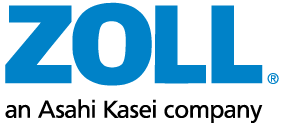Pediatric Biphasic Recommendations
Pediatric Defibrillation — Current AHA Guidelines
The 2010 AHA Guidelines for pediatric defibrillation state that, "based on data from adult studies and pediatric animal models, biphasic shocks appear to be at least as effective as monophasic shocks and less harmful. With a manual defibrillator (monophasic or biphasic), use a dose of 2 J/kg for the first attempt and 4 J/kg for subsequent attempts."
ZOLL Biphasic Approval for Pediatrics
FDA approval for the use of ZOLL's Rectilinear Biphasic™ waveform (RBM) technology on pediatrics was based on the results from A Comparative Biphasic Defibrillation Study for Pediatric Dosing Levels Using a Porcine Model. This study demonstrates the safety and efficacy of this waveform on pediatric patients and supports a defibrillation protocol of 2J/kg. Although this is the same protocol as used with monophasic waveforms, pediatric patients will benefit from a reduced possibility of myocardial dysfunction associated with the use of biphasic waveforms, which deliver less peak current than monophasic waveforms.
Use of ZOLL AEDs for Pediatric Defibrillation
The ZOLL AED 3®, AED Plus® defibrillator and AED Pro® defibrillator have been approved for defibrillation of pediatric patients with the use of ZOLL's Pedi-padz® II. Sudden cardiac arrest rarely strikes a small child. When it does, the American Heart Association recommends the use of an AED that delivers lower, pediatric doses of energy. 1
The ZOLL AED 3, AED Plus and AED Pro defibrillators provide several advantages over other AEDs for pediatric defibrillation. First, they let you know which kind of rescue is in progress: adult or pediatric. This helps prevent mistakes and rescuers are less likely to deliver too little energy to an adult because pediatric pads are attached or too much energy to a child because adult pads are attached. Rescuers can even switch pads in mid-rescue if they discover a mistake.
Second, unlike most other AEDs, with pediatric pads attached, the ZOLL AED 3, AED Plus and AED Pro use an ECG rhythm analysis that has been specifically designed and tested with ECGs specific to the pediatric patient population, particularly rhythms such as ventricular and supraventricular tachycardias that are very different from adults. 2
Finally, these devices also deliver specific lower energy levels for children. Default energy settings for pediatric defibrillation with the ZOLL AED 3, AED Plus and AED Pro are 50 J, 70 J, and 85 J. Energy settings can be configured by the customer with the use of ZOLL® Administrative Software. Other AEDs send higher adult levels of energy to their pediatric pads and then count on special resistors in the wires to reduce the energy delivered to the child's heart. Added resistors will often result in waveform durations that are too long, thus potentially reducing the effectiveness of the waveform. The ZOLL AED 3, AED Plus and AED Pro always deliver the lower energy levels specific to a pediatric rescue with the optimal duration and current levels. Your rescuers can rest assured the energy delivered will be right for the child they are rescuing.
Advantages of the ZOLL Rectilinear Biphasic Waveform
Optimal Duration for Defibrillation Shocks
Superior for Cardioversion of Atrial Fibrillation
Superior for Defibrillation of Out-of-Hospital Cardiac Arrest
1Sampson RA, Berg RA, Bingham R, et al. Use of automated External Defibrillators for Children: An Update. Circulation 2003:107:3250-3255
2Atkins D, Law I, Blaufox A, et al. Automated external defibrillator analysis specifically designed for pediatric patients. Journal of the American College of Cardiology. 2005:1090-228. Abstract.

